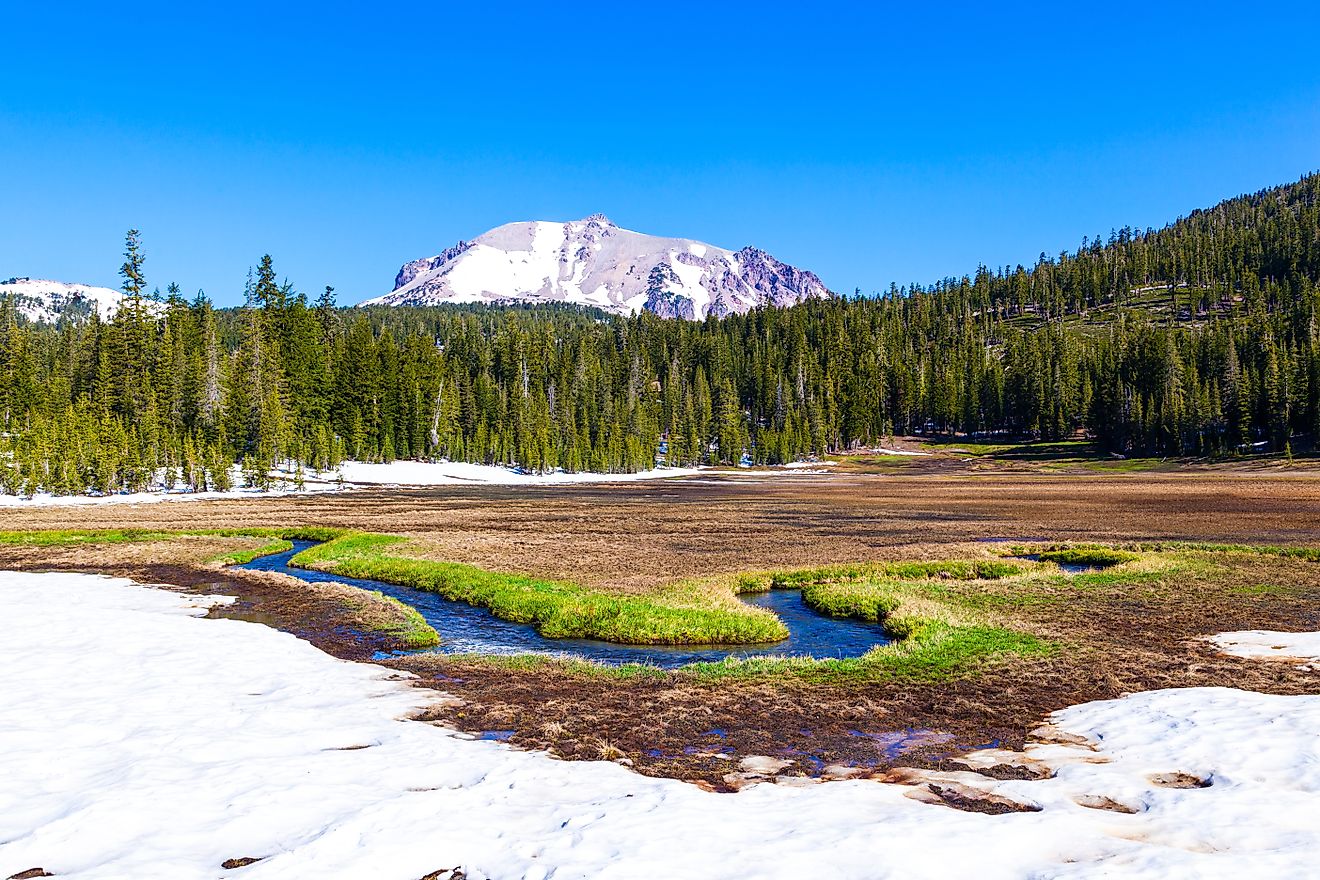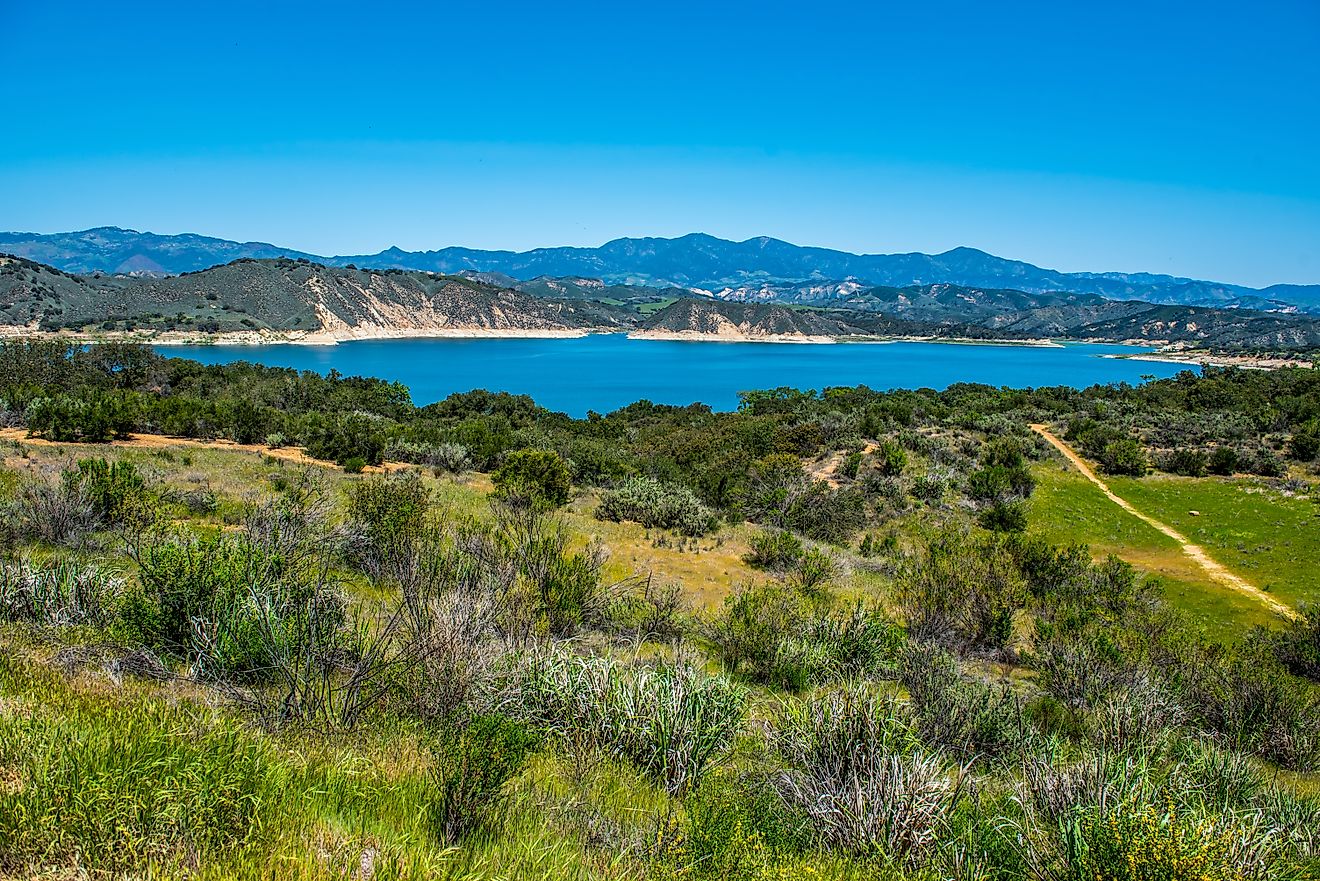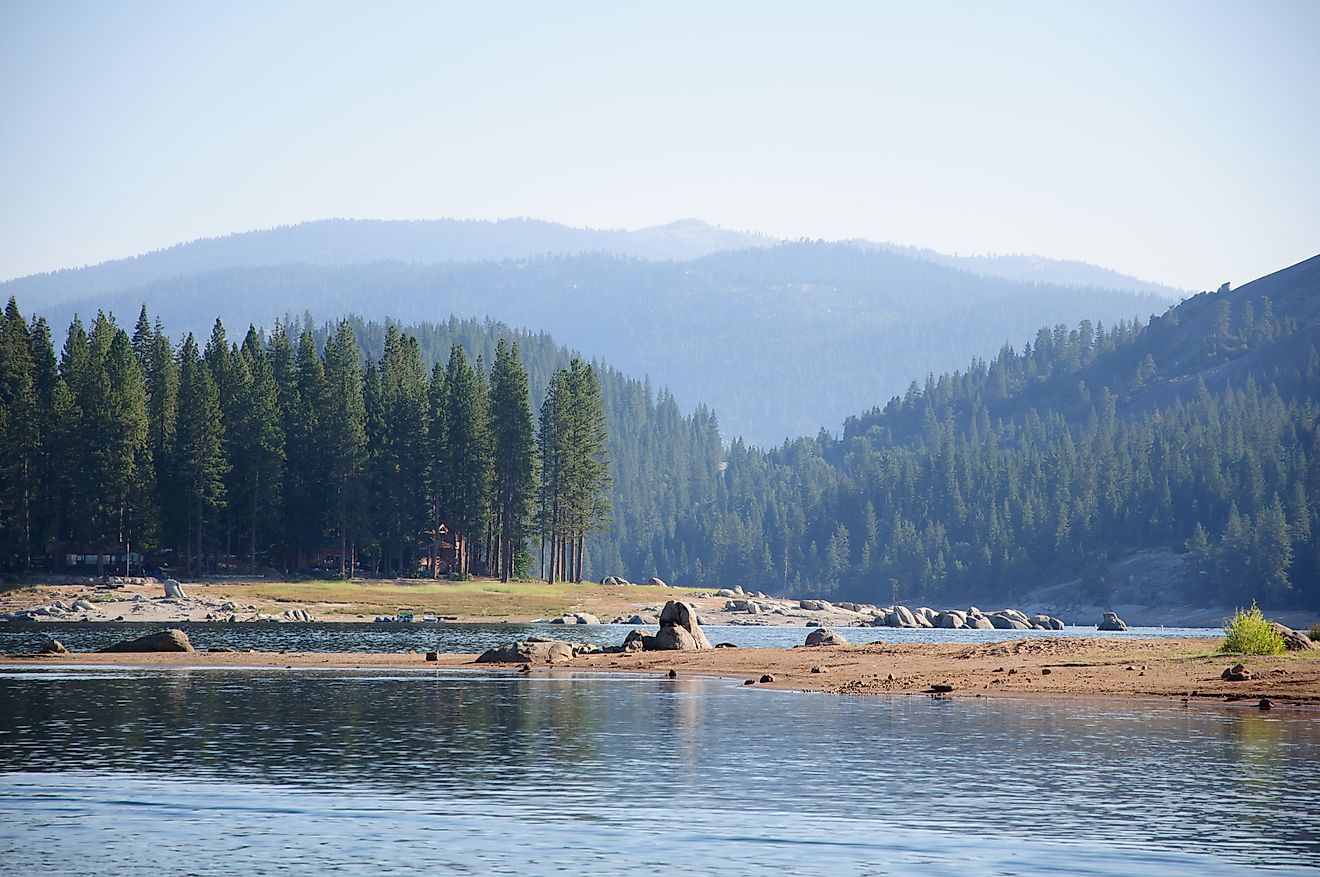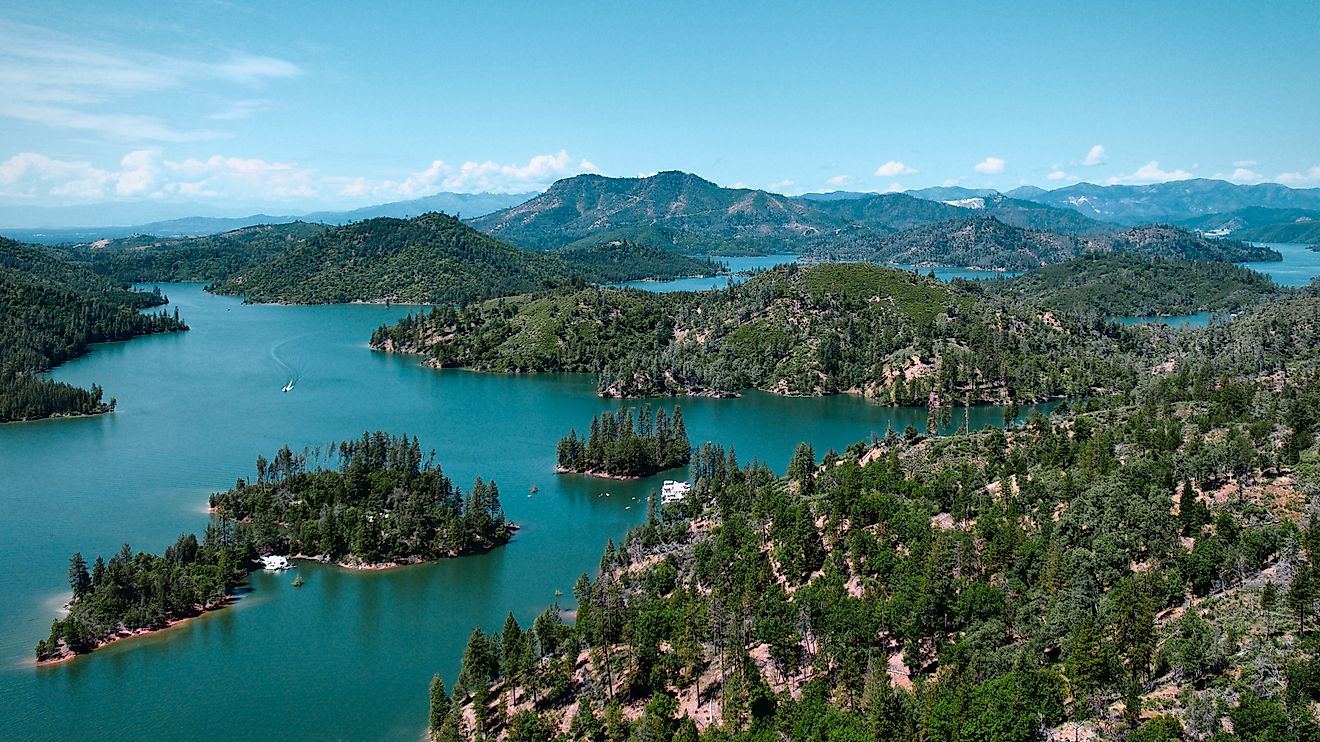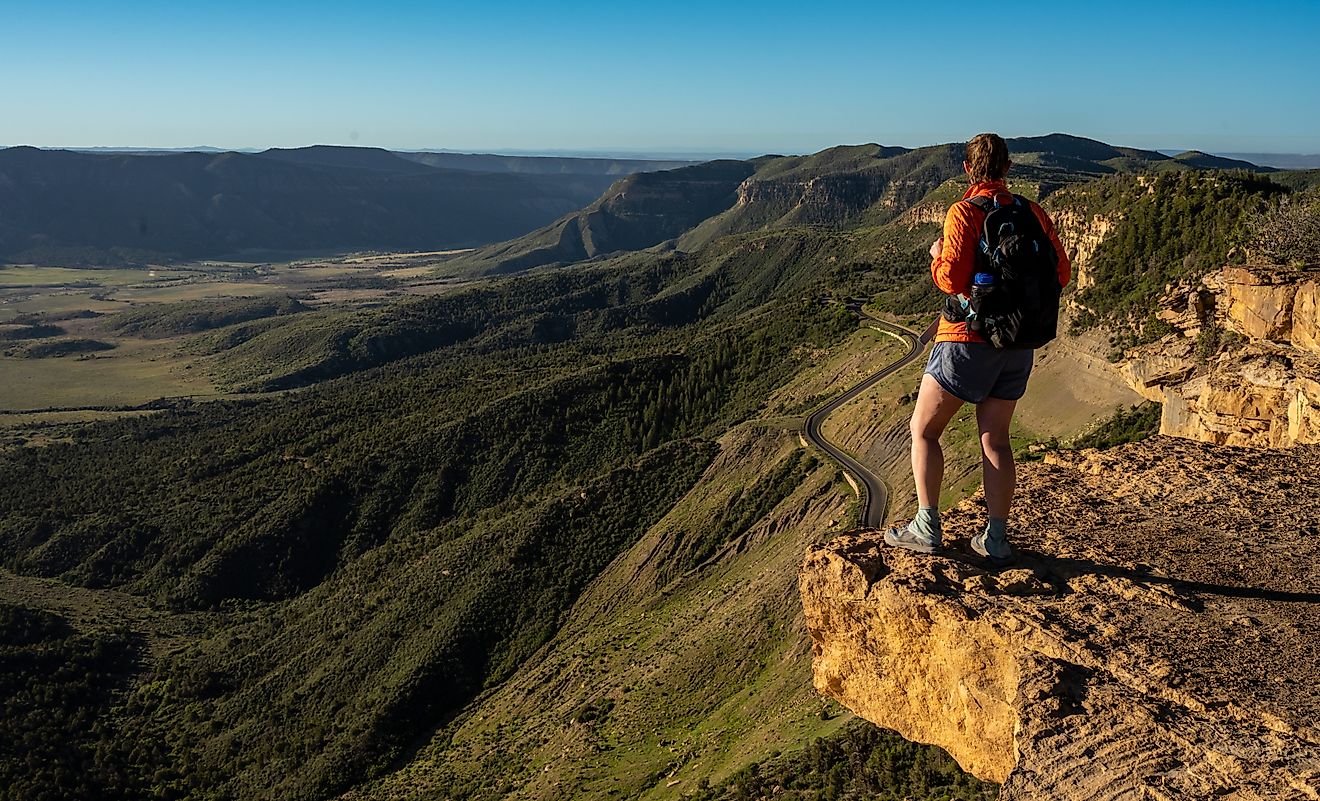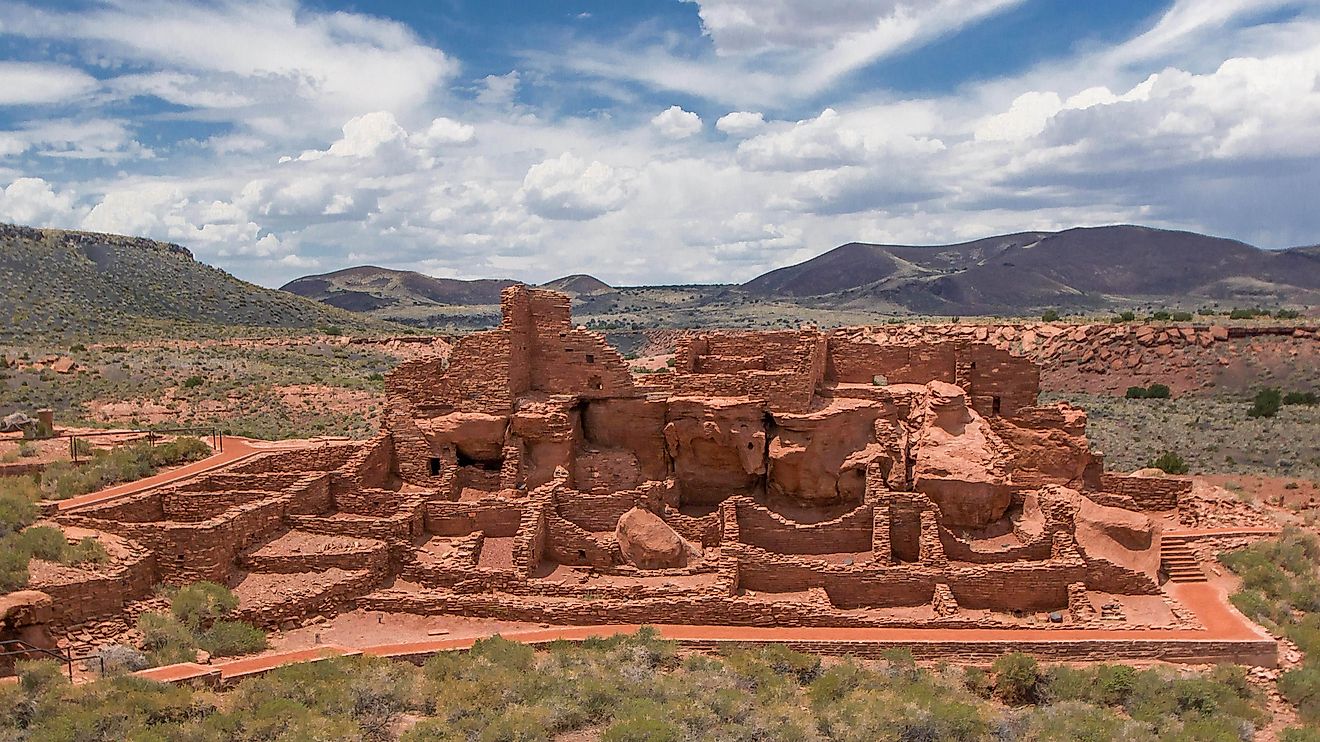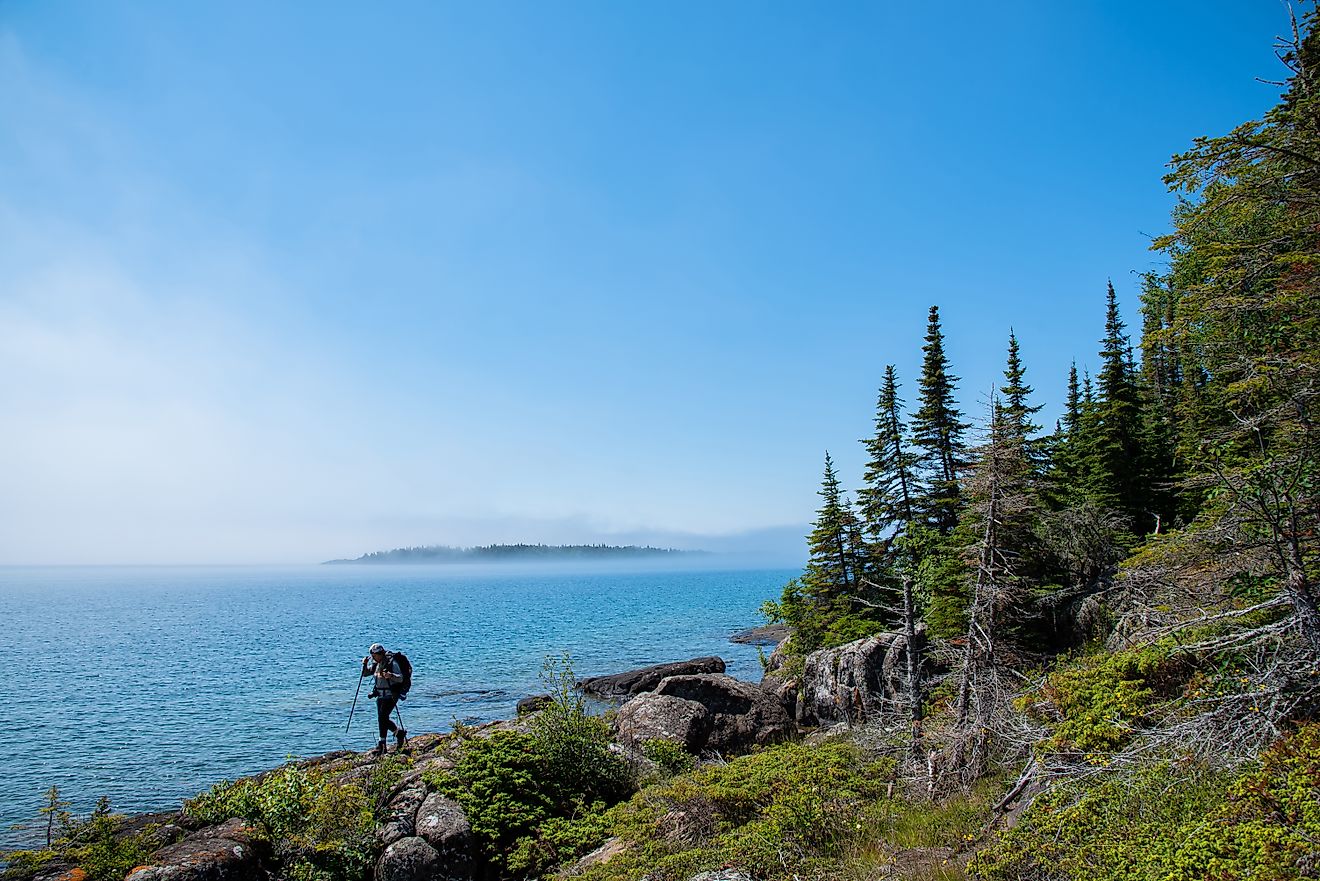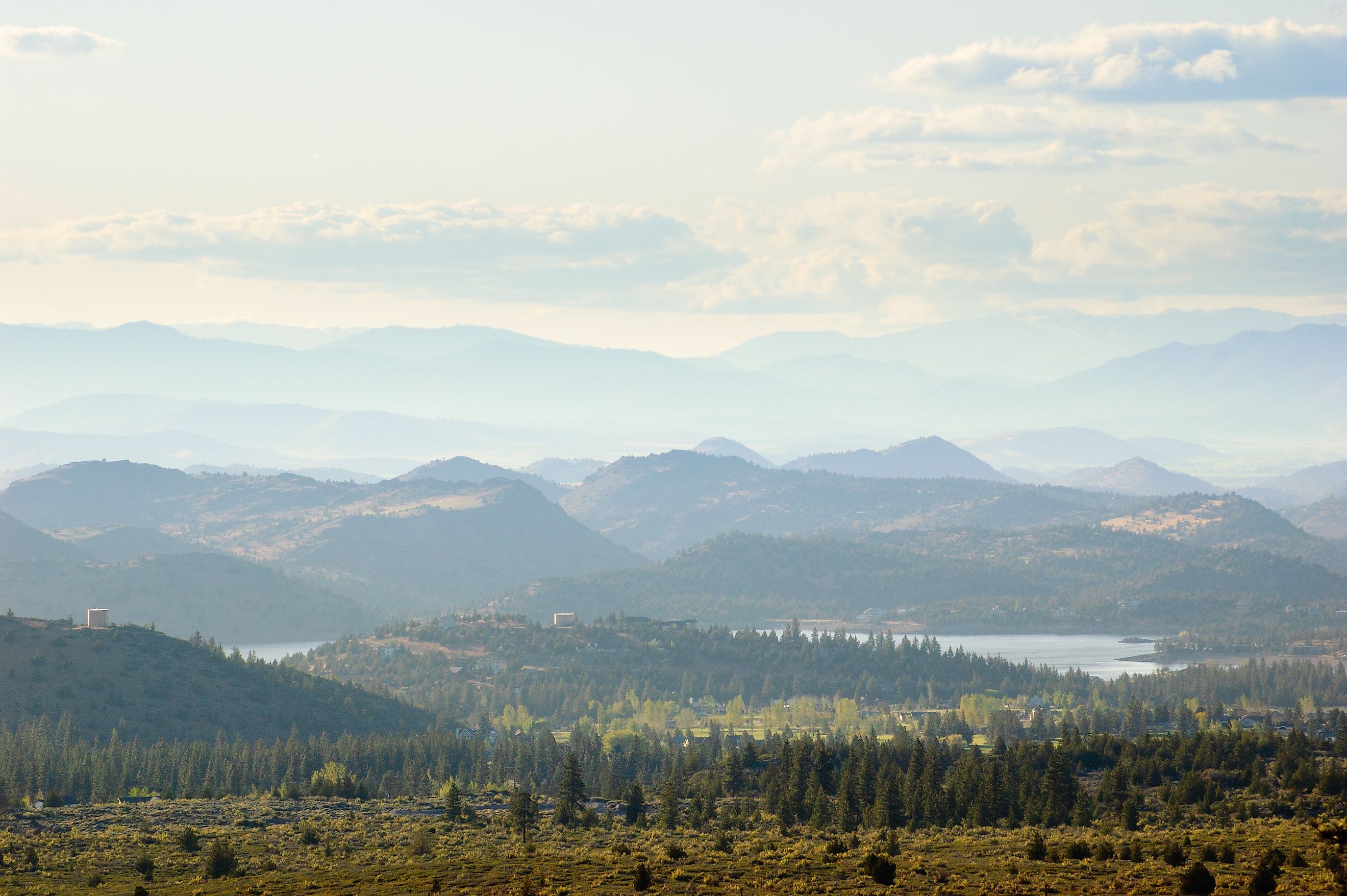
Shasta-Trinity National Forest
Shasta-Trinity National Forest is a natural wonder in northern California packed with dramatic peaks, sprawling lakes, rushing rivers, and vast wilderness areas stretching over 2.2 million acres. This forest combines adventure, recreation, and ecological diversity, offering experiences that range from serene lakeside hikes to challenging alpine climbs. With its mix of volcanic landscapes, lush valleys, and pristine waterways, it remains one of the most captivating public lands in the United States.
A Rich Legacy of Conservation and Recreation
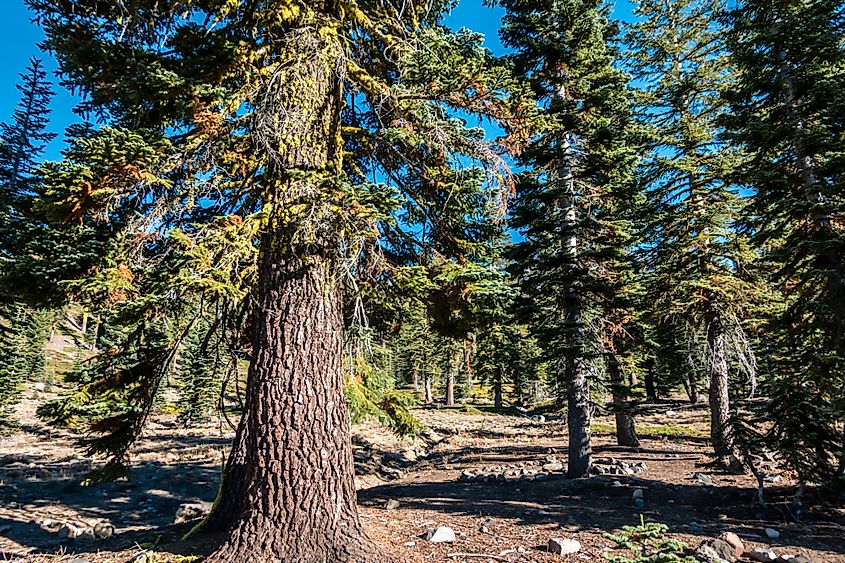
Shasta-Trinity National Forest has a long and fascinating history. Shasta National Forest and Trinity National Forest were both created in 1905 and merged in 1954. Early efforts focused on timber management, resource protection, and trail building. During the 1930s, the Civilian Conservation Corps helped lay the foundation for the trails, campgrounds, and infrastructure that support modern exploration.
The forest spans several counties, including Trinity, Shasta, Siskiyou, Tehama, Modoc, and Humboldt, covering a variety of landscapes from low foothills to alpine terrain. Its management balances recreation, conservation, and resource use, maintaining a forest that is accessible yet ecologically vibrant.
Wilderness Areas That Inspire
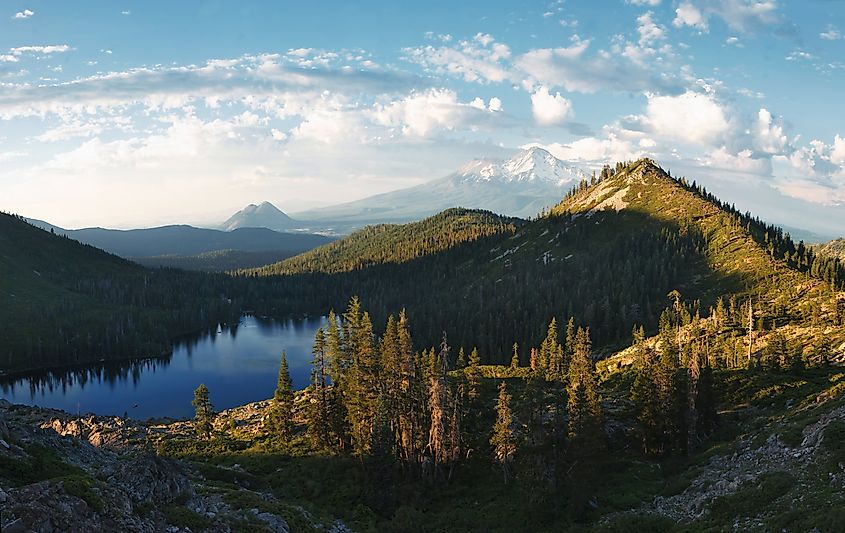
The forest includes portions of five congressionally designated wilderness areas, each offering unique landscapes and recreational opportunities:
-
Castle Crags Wilderness: Dramatic granite spires and panoramic views perfect for hiking and photography.
-
Chanchelulla Wilderness: Secluded terrain for quiet exploration.
-
Mount Shasta Wilderness: Alpine climbs and snow-covered peaks surrounding the iconic Mount Shasta.
-
Trinity Alps Wilderness: Crystal-clear alpine lakes, jagged peaks, and abundant hiking trails.
-
Yolla Bolly-Middle Eel Wilderness: Remote backcountry areas that support diverse wildlife and plant life.
These wilderness zones protect rare ecosystems while offering an immersive experience for adventurers seeking solitude and challenge.
Wildlife and Habitats Across Elevations
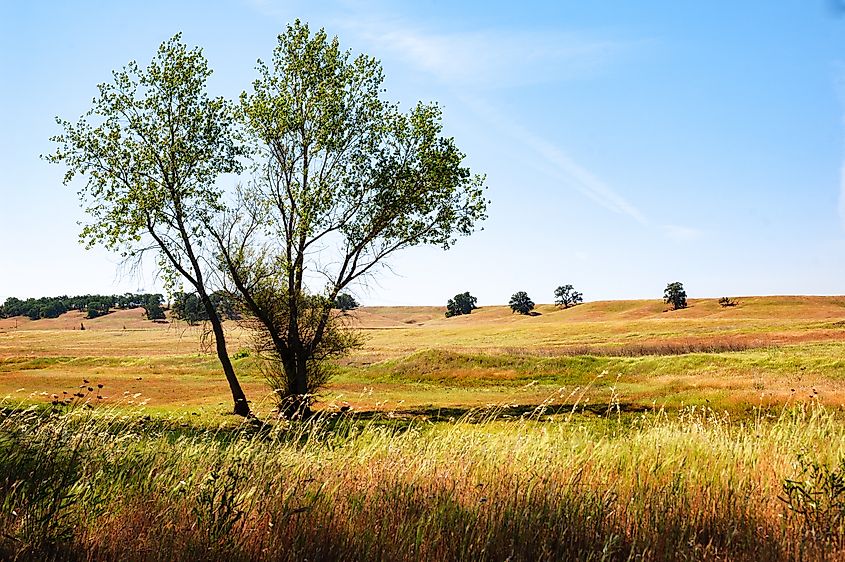
Shasta-Trinity National Forest is a mosaic of ecosystems, shaped by its vast elevation range and diverse vegetation. Lower elevations feature gray pine, knobcone pine, ponderosa pine, blue oak, and black oak, with an understory of whiteleaf manzanita, wedgeleaf ceanothus, and California buckeye. Streamside canyons bring together bigleaf maple, western spicebush, dogwood, white alder, and willows, providing essential habitats for amphibians and aquatic species.
Mid-elevation forests mix sugar pine, incense-cedar, white fir, and Jeffrey pine with Douglas-fir and ponderosa pine, alongside shrubs such as shrub tanoak, greenleaf manzanita, and bush chinquapin. Higher elevations rise into alpine zones dominated by red fir, mountain hemlock, foxtail pine, lodgepole pine, Western white pine, and whitebark pine. Montane meadows host unique flora including California pitcherplant and western azalea.
This variety of vegetation supports a rich array of wildlife. Deer, black bears, bobcats, and mountain lions roam the forests, while owls, woodpeckers, and migratory birds thrive in the canopy. Rare alpine species inhabit higher zones, and wetlands and riparian areas maintain ecological balance. Together, these habitats make the forest a living classroom for scientists, naturalists, and anyone captivated by northern California’s wild landscapes.
Lakes, Rivers, and Reservoirs
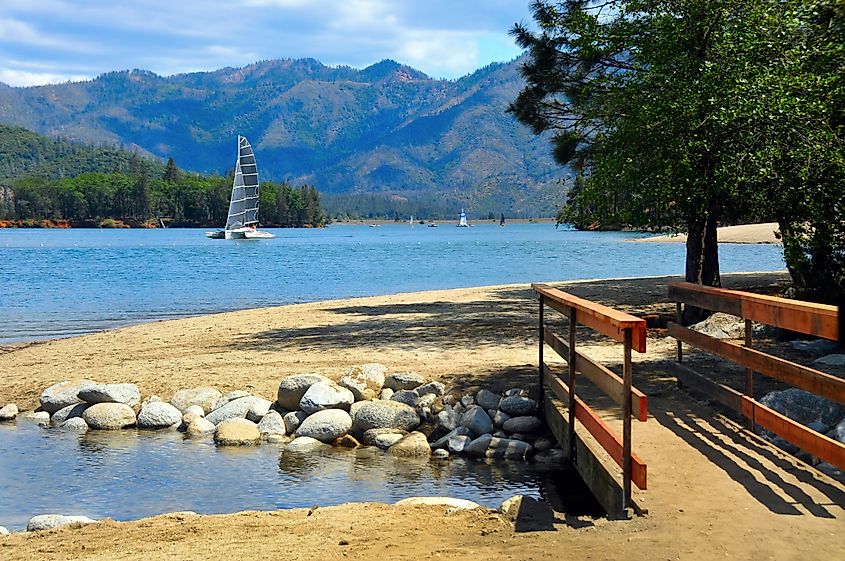
Waterways are central to the forest’s character. Shasta Lake, the largest man-made lake in California, stretches over 365 miles of shoreline with multiple arms, including the Sacramento, McCloud, Squaw Creek, and Pit branches. The lake supports houseboating, kayaking, fishing, and camping.
Lewiston Lake lies just downstream from Trinity Dam and provides consistent water levels for recreation. Other reservoirs such as Iron Canyon, Lake McCloud, Trinity Lake, and Shasta Lake create opportunities for boating, fishing, and lakeside camping.
The Trinity River, including its National Wild and Scenic section, flows through the forest along with the South Fork Trinity River. Salmon, steelhead, and trout populate rivers and streams such as Stuart Fork, Canyon Creek, Coffee Creek, Grizzly Creek, Rush Creek, and Swift Creek, offering premier angling experiences. Alpine lakes in the Trinity Divide support trout and other freshwater species.
Trails, Peaks, and Scenic Routes
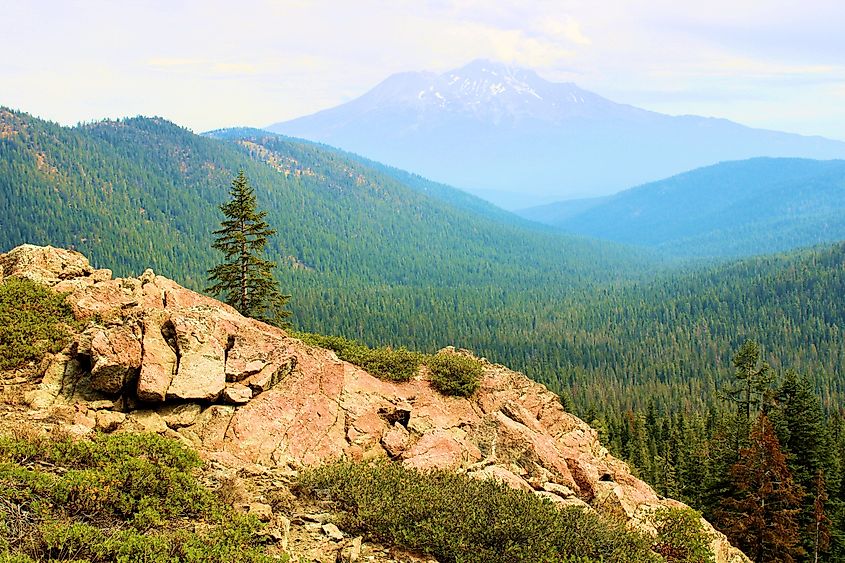
Mount Shasta rises to 14,179 feet, providing climbers and hikers with a striking challenge. Trails total more than 460 miles and include a 154-mile segment of the Pacific Crest Trail.
Scenic byways highlight the forest’s volcanic landscapes. The Volcanic Legacy Scenic Byway connects Lassen Volcanic National Park, Mount Shasta, and Crater Lake. The Modoc Volcanic Scenic Byway begins in McCloud and winds through Medicine Lake, Lava Beds National Monument, and Tule Lake, showcasing extraordinary volcanic formations.
Lookouts and Historic Cabins
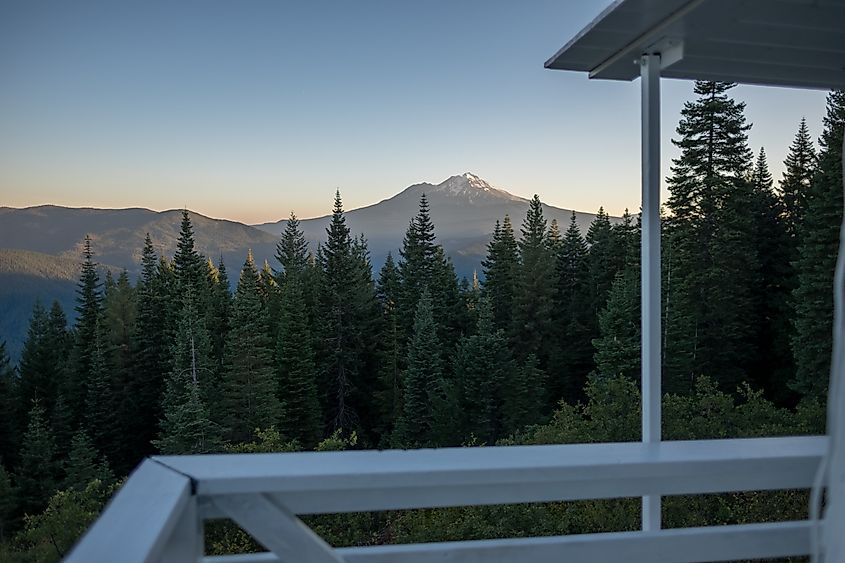
Lookouts provide sweeping views of the forest and surrounding mountains. Little Mount Hoffman Fire Lookout, at 7,309 feet, offers 360-degree panoramas of Mount Shasta, Lassen Peak, and surrounding terrain. Other notable lookouts include Hirz and Post Creek.
The forest also features historic cabins such as Forest Glen Cabin, built in 1916. This oldest building in the forest is available for rent and provides a unique opportunity to experience the forest’s history while enjoying a stay surrounded by nature.
Endless Outdoor Adventures
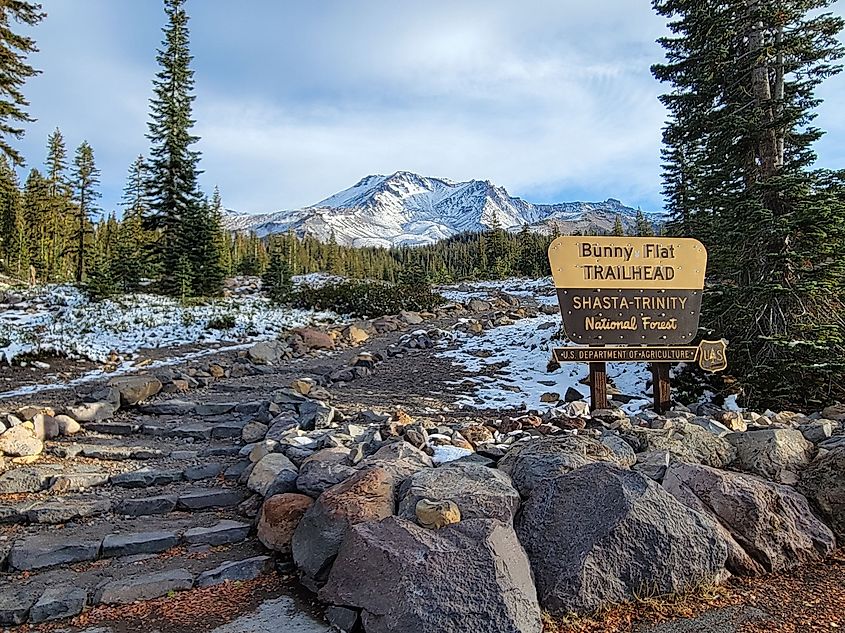
Shasta-Trinity National Forest offers an extraordinary variety of outdoor recreation year-round, with options for every type of adventurer:
-
Hiking and backpacking: Trails range from gentle lakeside walks to challenging alpine climbs for casual hikers and experienced backpackers.
-
Camping: Developed campgrounds and remote backcountry sites provide options for overnight stays.
-
Fishing and boating: Rivers and lakes are home to trout, salmon, and bass, perfect for fishing, kayaking, or houseboating.
-
Winter sports: Skiing, snowboarding, cross-country skiing, and snowmobiling take advantage of snow-covered slopes.
-
Climbing and horseback riding: Rocky peaks and open meadows provide adventure for climbers and riders of all skill levels.
Key access points include the towns of Mount Shasta, Weaverville, Redding, McCloud, and Lewiston, with seasonal conditions such as winter snow affecting higher elevations. Permits may be required for certain wilderness areas or overnight trips. Recreational rentals, from boats to climbing gear, and lodging options, including cabins, campgrounds, and nearby hotels, make it easy to combine adventure with comfort.
Protecting a Natural Treasure
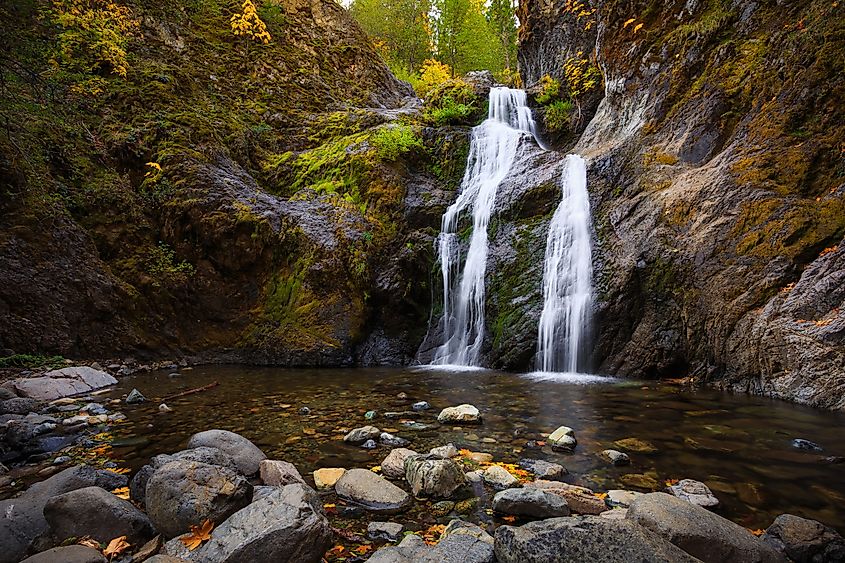
Shasta-Trinity National Forest is more than a playground for outdoor enthusiasts; it is a carefully managed landscape where conservation and recreation coexist. Fire lookouts, ranger stations, and trail maintenance safeguard both visitors and ecosystems, while timber management, wildlife preservation, and watershed protection ensure the forest’s health for generations.
Public programs and volunteer opportunities foster a sense of stewardship, inviting people to connect with the land responsibly. This balance of use and preservation keeps Shasta-Trinity National Forest one of California’s most remarkable and enduring natural treasures.
Key Highlights of Shasta-Trinity National Forest
| Feature | Details |
|---|---|
| Size | 2,210,485 acres |
| Major Peaks | Mount Shasta (14,179 ft), Trinity Alps |
| Wilderness Areas | Castle Crags, Chanchelulla, Mount Shasta, Trinity Alps, Yolla Bolly-Middle Eel |
| Lakes | Shasta Lake, Lewiston Lake, Trinity Lake, Iron Canyon, Lake McCloud |
| Rivers | Trinity River, South Fork Trinity River, Stuart Fork, Canyon Creek, Coffee Creek |
| Trails | 460+ miles, including 154 miles of Pacific Crest Trail |
| Scenic Byways | Volcanic Legacy, Modoc Volcanic Scenic Byway |
| Recreational Activities | Hiking, backpacking, camping, fishing, boating, skiing, snowboarding, snowmobiling, climbing, horseback riding |
| Historic Sites | Forest Glen Cabin, fire lookouts like Little Mount Hoffman |
